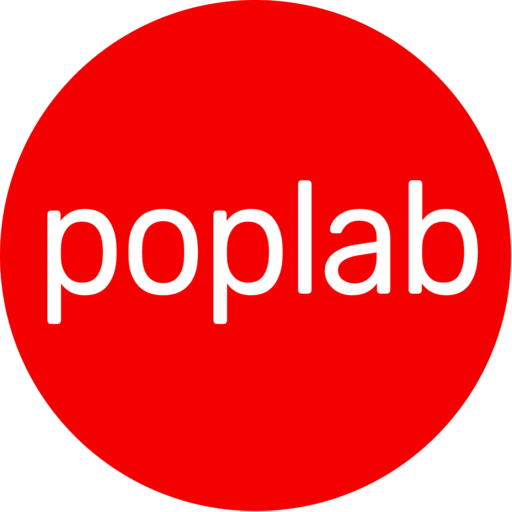In a world where user needs evolve faster than software updates, the most successful digital products aren’t those built to last—they’re built to adapt. The era of rigid, one-size-fits-all solutions is giving way to flexible product design that embraces uncertainty as a feature, not a bug.
As product teams face accelerating technological change and increasingly diverse user contexts, the traditional approach of defining every interaction upfront is becoming not just limiting, but counterproductive. Instead, tomorrow’s digital products succeed by creating frameworks that bend without breaking, systems that grow with their users, and experiences that become more valuable through adaptation rather than prescription.
Excerpt: “The most resilient products aren’t built like fortresses—they’re built like flowing water, finding new paths when old ones become blocked, and creating value through flexibility rather than rigidity.”
The End of the One-Size-Fits-All Product
The digital landscape has fundamentally shifted. Where we once designed for average users on standard devices with predictable workflows, we now face an explosion of contexts: remote work setups, hybrid collaboration models, AI-augmented workflows, and users who demand products that fit their unique situations rather than force conformity.
Traditional product development assumes we can anticipate user needs and define optimal paths through careful research and testing. But this assumption breaks down when facing the complexity of modern digital ecosystems. A project management tool that works perfectly for a Silicon Valley startup may fail completely for a distributed nonprofit, not because of poor design, but because it lacks the flexibility to accommodate different organizational structures and cultural contexts.
The most successful products today—from Notion’s block-based approach to Figma’s collaborative canvas—succeed precisely because they provide powerful building blocks rather than prescribed workflows. They recognize that user expertise and context often exceed what any design team can anticipate, and they design for this reality rather than against it.
Building for Change: The Case for Modular Design
Modular design isn’t just about component libraries or design systems—it’s about architecting products that can evolve without requiring complete rebuilds. This means designing at multiple levels: modular interfaces that users can reconfigure, modular data structures that accommodate different information architectures, and modular workflows that adapt to different team dynamics.
Consider how Airtable bridges the gap between spreadsheets and databases by providing modular views, fields, and automations that users can combine in countless ways. The platform doesn’t try to solve every use case upfront; instead, it provides robust building blocks that users combine to create solutions the original designers never imagined.
This modular approach extends beyond user-facing features to the underlying technology architecture. API-first design, microservices, and headless architectures aren’t just technical choices—they’re strategic decisions that enable products to integrate with unexpected systems and adapt to unforeseen requirements.
For cross-functional teams, modular design means building products where different stakeholders can contribute their expertise without requiring deep technical knowledge. Marketing teams can modify content structures, operations teams can adjust workflows, and users can customize interfaces—all within a coherent system that maintains its integrity while allowing for local adaptation.
Empowering Users as Co-Creators
The shift toward flexible product design fundamentally changes the relationship between designers and users. Instead of positioning users as passive recipients of carefully crafted experiences, flexible design recognizes users as active co-creators who bring domain expertise that no external design team can match.
This doesn’t mean abandoning design expertise or creating chaotic, anything-goes interfaces. Instead, it means designing the meta-experience: the tools, constraints, and patterns that enable users to create valuable configurations while maintaining usability and coherence.
Successful user empowerment requires sophisticated design thinking. Creating a tool that non-designers can use to build effective interfaces is far more challenging than designing those interfaces directly. It requires understanding not just what users need to accomplish, but how they think about their problems and what mental models they bring to solution-building.
AI is becoming a crucial enabler in this space, helping bridge the gap between user intent and technical implementation. Smart defaults, contextual suggestions, and automated optimization can help users create effective configurations without requiring deep technical knowledge, while still preserving their agency and creativity.
The Business Rewards of Adaptive Systems
Flexible product design isn’t just a user experience philosophy—it’s a business strategy that creates sustainable competitive advantages. Products that adapt to user needs rather than forcing users to adapt create stickier experiences, reduce churn, and generate more opportunities for expansion revenue.
Adaptive systems also reduce the burden on product teams to anticipate every possible use case. Instead of building features for edge cases that may or may not matter, teams can focus on creating robust foundations that enable users to address their own edge cases. This leads to more focused development efforts and faster time-to-market for core functionality.
From a scaling perspective, flexible products often exhibit network effects that rigid products cannot. When users can adapt products to their specific contexts, they’re more likely to advocate for adoption within their organizations and communities. These internal champions become force multipliers for growth in ways that traditional feature-based selling cannot achieve.
Moreover, adaptive systems generate valuable data about user behavior and needs that can inform product strategy. When users have the freedom to configure and customize, their choices reveal preferences and use patterns that structured user research might miss.
From Rigid Rules to Fluid Frameworks
The transition from rigid to flexible design requires rethinking fundamental assumptions about how digital products should work. Instead of defining specific user journeys, designers create journey frameworks that can accommodate different paths while maintaining coherence. Instead of prescribing optimal workflows, they design workflow languages that users can compose into solutions.
This shift requires new design skills and methodologies. Traditional user research focused on understanding current needs and pain points. Flexible design research must also explore user capabilities, mental models, and latent creativity. It requires understanding not just what users want to achieve, but how they prefer to think about and organize their work.
Prototyping for flexible systems also differs from traditional product prototyping. Instead of testing specific features or flows, teams must test the meta-systems: Can users understand the building blocks? Can they combine them effectively? Do the constraints guide them toward good solutions while still allowing creativity?
Implementing flexible design at scale requires strong cross-functional collaboration. Engineering teams need to build for configurability from the ground up, not as an afterthought. Product teams need to define coherent constraint systems that provide guidance without being restrictive. And design teams need to create component systems that work across countless possible configurations.
About Poplab: We specialize in end-to-end digital transformation that balances structured strategy with adaptive execution. Our cross-functional approach helps organizations build products that scale across cultures, teams, and technological changes while maintaining coherence and usability. Whether you’re designing for AI integration, global markets, or rapidly evolving user needs, we help create systems that bend without breaking.


Leave a Reply